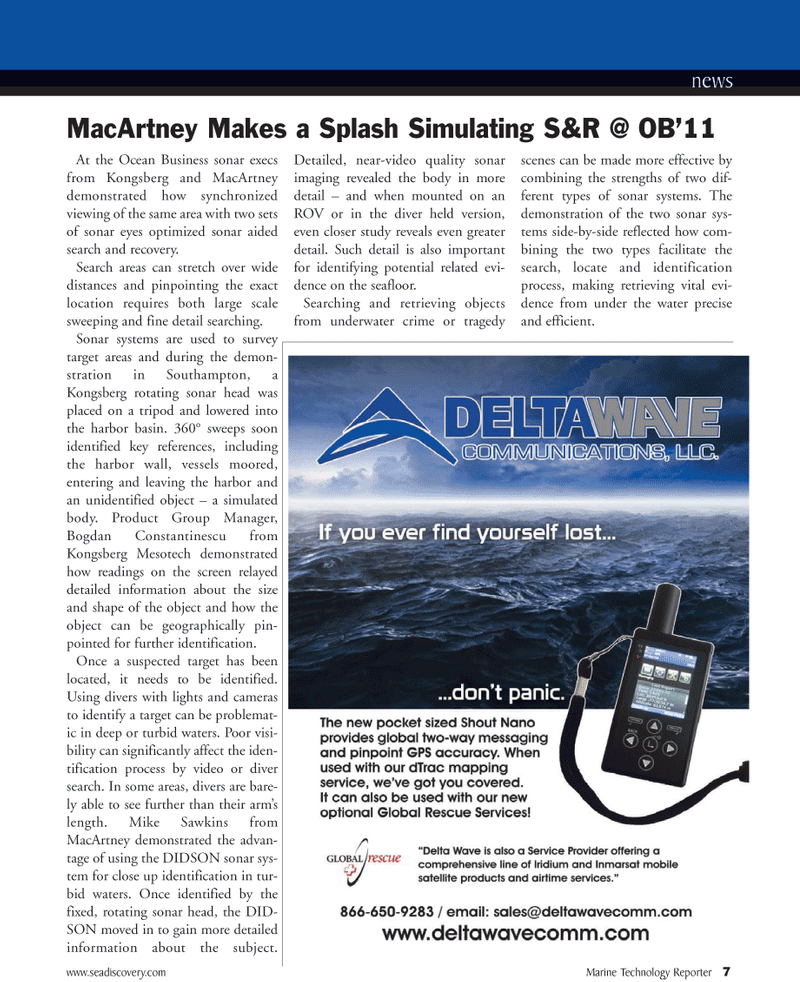
Page 7: of Marine Technology Magazine (June 2011)
Hydrographic Survey
Read this page in Pdf, Flash or Html5 edition of June 2011 Marine Technology Magazine
www.seadiscovery.com Marine Technology Reporter 7
At the Ocean Business sonar execs from Kongsberg and MacArtney demonstrated how synchronized viewing of the same area with two sets of sonar eyes optimized sonar aided search and recovery.
Search areas can stretch over wide distances and pinpointing the exact location requires both large scale sweeping and fine detail searching.
Sonar systems are used to survey target areas and during the demon- stration in Southampton, a
Kongsberg rotating sonar head was placed on a tripod and lowered into the harbor basin. 360° sweeps soon identified key references, including the harbor wall, vessels moored, entering and leaving the harbor and an unidentified object – a simulated body. Product Group Manager,
Bogdan Constantinescu from
Kongsberg Mesotech demonstrated how readings on the screen relayed detailed information about the size and shape of the object and how the object can be geographically pin- pointed for further identification.
Once a suspected target has been located, it needs to be identified.
Using divers with lights and cameras to identify a target can be problemat- ic in deep or turbid waters. Poor visi- bility can significantly affect the iden- tification process by video or diver search. In some areas, divers are bare- ly able to see further than their arm’s length. Mike Sawkins from
MacArtney demonstrated the advan- tage of using the DIDSON sonar sys- tem for close up identification in tur- bid waters. Once identified by the fixed, rotating sonar head, the DID-
SON moved in to gain more detailed information about the subject.
Detailed, near-video quality sonar imaging revealed the body in more detail – and when mounted on an
ROV or in the diver held version, even closer study reveals even greater detail. Such detail is also important for identifying potential related evi- dence on the seafloor.
Searching and retrieving objects from underwater crime or tragedy scenes can be made more effective by combining the strengths of two dif- ferent types of sonar systems. The demonstration of the two sonar sys- tems side-by-side reflected how com- bining the two types facilitate the search, locate and identification process, making retrieving vital evi- dence from under the water precise and efficient. news
MacArtney Makes a Splash Simulating S&R @ OB’11

 6
6

 8
8
